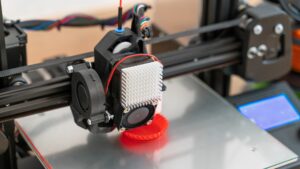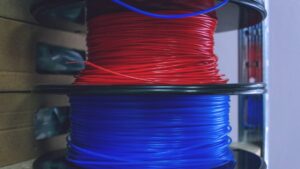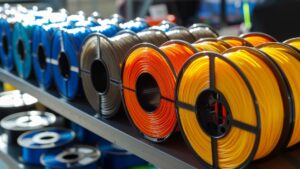
A Look at the Different Densities of 3D Printing Materials
There’s so much to learn about 3D printing materials. Come and find out what to look for when examining the different densities of 3D printing filaments.
844-810-1385
Say what? Humidity? OK, we added that one, but it is true. NOTHING can ruin a 3D print faster and more spectacularly than wet filament. Discover what you need to know about 3D printers and humidity levels.
Oh, how many blogs have we written exhorting you, the reader, to be knowledgeable about the hygroscopic properties of certain filaments? Probably at least half a dozen. Few realize that the moisture content in the air can significantly impact 3D printed items. When certain filaments absorb water, their integrity is compromised, leading to various inconsistencies in the resulting prints. This is especially true for Nylon, but it can also affect PLA, TPU, and ABS.
Humidity, measured in percentages, should not exceed 40 percent for filaments like PLA and ABS, and it should be under 20 percent for very hygroscopic plastics like TPU, PETG, or any flavor of Nylon. Failure to pay attention to this will result in ugly, stringy prints that have poor layer adhesion.
Temperature and humidity go hand in hand—like peanut butter and jelly—so paying attention to the thermostat is important. You need to keep your 3D printing space at proper temperatures to help keep humidity at bay; anything between 60° and 80° Fahrenheit is deemed agreeable by most filaments. An easy rule of thumb is that if you’re comfortable, your filament probably is, too.
Desiccants play a critical role in mitigating humidity—you know, the little packets that say Do Not Eat and came with your last electronics purchase. Most often made of silica gel, they are a 3D printer’s best friend. They keep filaments dry when in storage so that pre-print drying is not necessary.
Once out of storage, the filament still likes an arid environment. Air-conditioned spaces and indoor room dehumidifiers are the superheroes of your printing space, ensuring a humidity-free zone for your 3D printer.
Don’t leave your filaments out in the open, as it’s not just the moisture but the dusty chaos and random foreign particles that will bug them—pun intended. Airtight containers with desiccants inside create a safe haven for your spools, making them ready to roll whenever you pull them out for a print run.
What about longer-term storage? If you need to store some infrequently used filament for a few months, consider using a vacuum sealer or vacuum travel bags. Remember to throw in a few desiccant packets and pull that air out. The final packaging is smaller than boxing and will remain airtight for the long haul.
Don’t wait for your prints to look like an animal shelter floor before you figure out your moisture game plan. Understanding how to work with the humidity levels in your space is key to unlocking the full potential of your 3D printer. With the right conditions, your prints will pop off the heat bed dressed to impress.
If you are still having issues with wet Nylon, maybe it’s time to change your filament. While it is not impervious to water—no Nylon is yet—Filamatrix’s Nylon Hydrophobic 3D filament takes on water much slower than its regular, run-of-the-mill counterparts. In most cases, you can print for days before needing to re-dry the spool.
FILAMATRIX
NEVER. FEEL. LIMITED.

There’s so much to learn about 3D printing materials. Come and find out what to look for when examining the different densities of 3D printing filaments.

3D printing has many variables that both beginners and experts need to know. Find out what effects temperature has on 3D printer filament.

Filaments print differently and yield varying quality results. What about quality variations within a filament family due to color? Let’s take a deeper look.
Get professional insights, industry news, and our latest deals